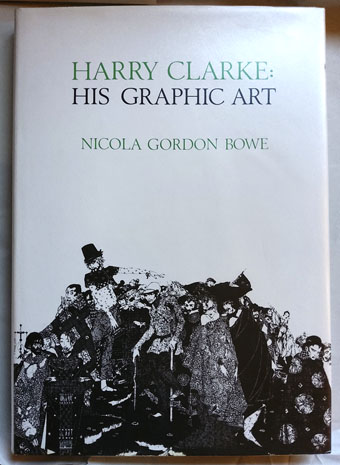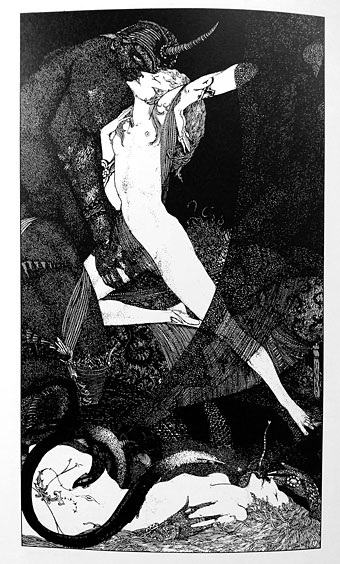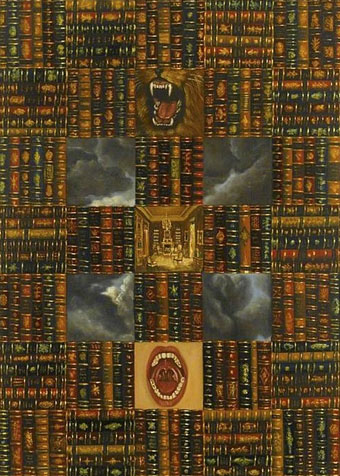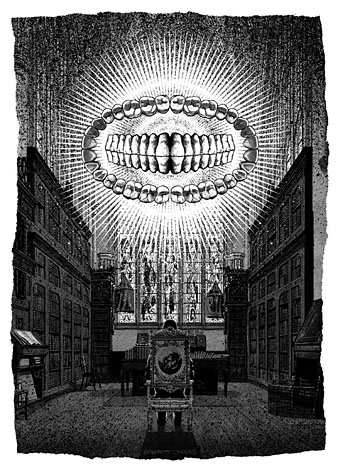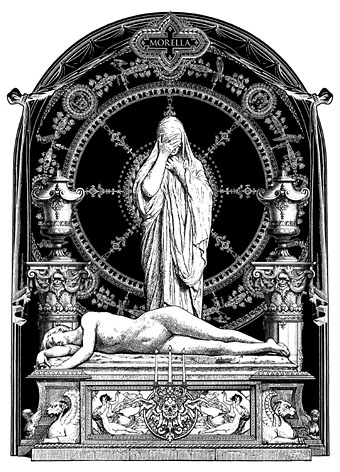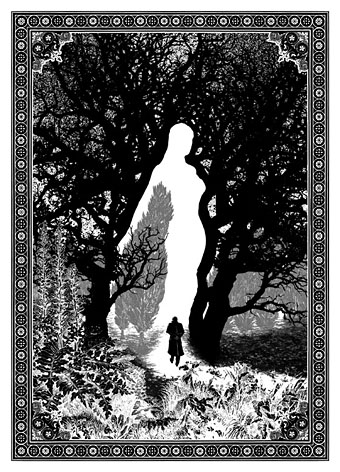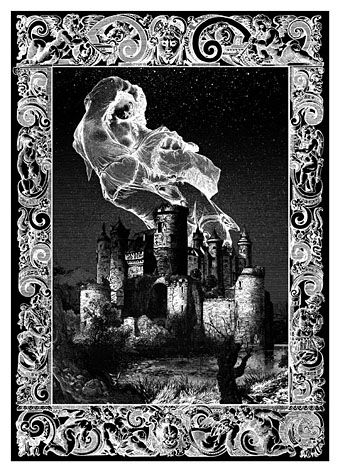In today’s post, the Ur-text of Harry Clarke studies by the late Nicola Gordon Bowe. The book was published by Ireland’s Dolmen Press in 1983, and is difficult to find in fine condition for under £50; I was fortunate on both counts. In addition to a detailed biography the book contains many drawings for magazines and smaller publications which have seldom been reproduced elsewhere, together with works like the illustration below, intended for the Clarke-illustrated edition of Swinburne’s poetry but suppressed by the publisher. File next to The Life and Work of Harry Clarke (1989), Nicola Gordon Bowe’s continuation of the scholarship begun here.
Elsewhere on { feuilleton }
• The illustrators archive
Previously on { feuilleton }
• Harry Clarke and others in The Studio
• Harry Clarke’s Fairy Tales of Charles Perrault
• Harry Clarke in colour
• The Tinderbox
• Harry Clarke and the Elixir of Life
• Cardwell Higgins versus Harry Clarke
• Modern book illustrators, 1914
• Illustrating Poe #3: Harry Clarke
• Strangest Genius: The Stained Glass of Harry Clarke
• Harry Clarke’s stained glass
• Harry Clarke’s The Year’s at the Spring
• The art of Harry Clarke, 1889–1931

